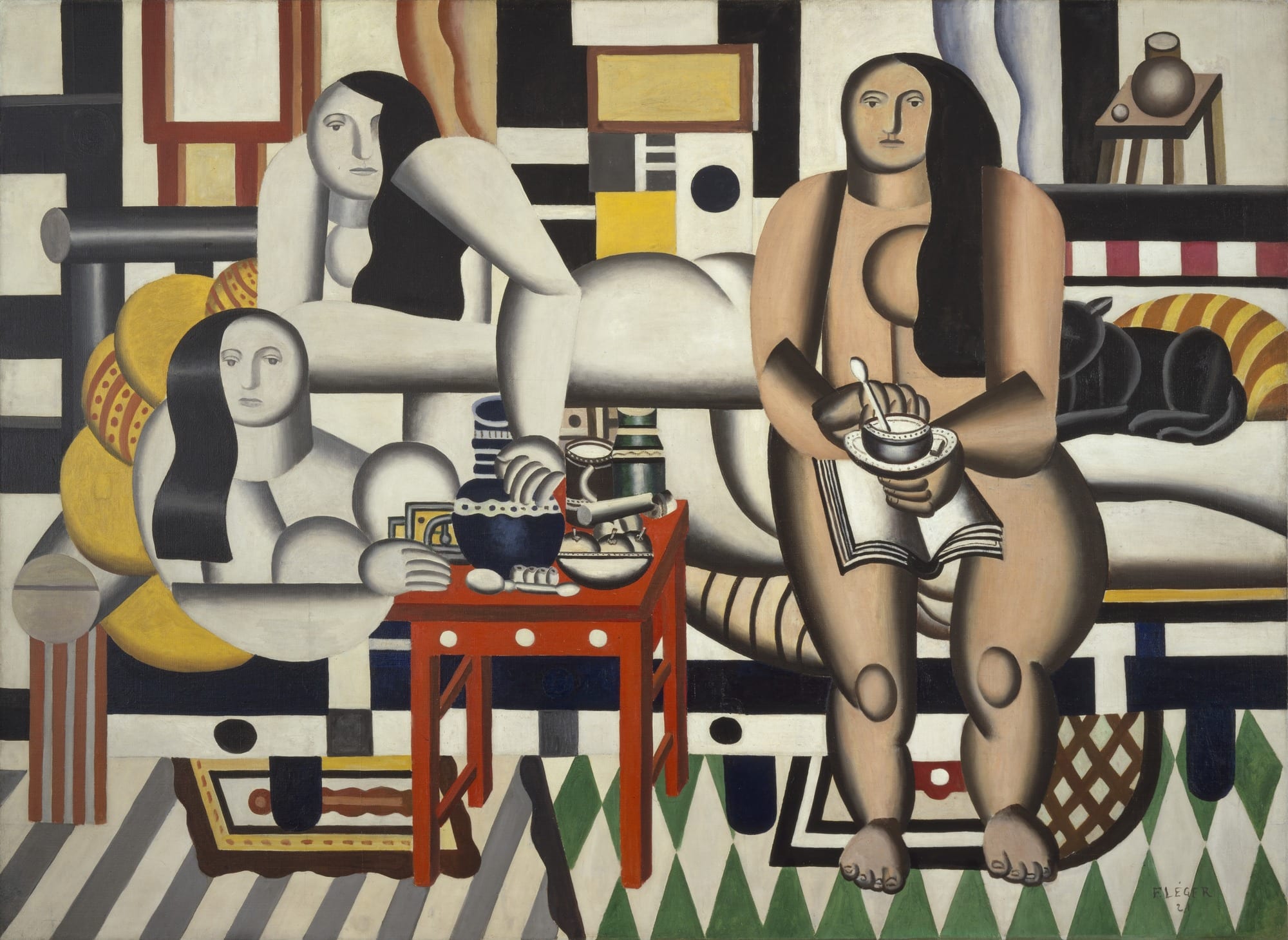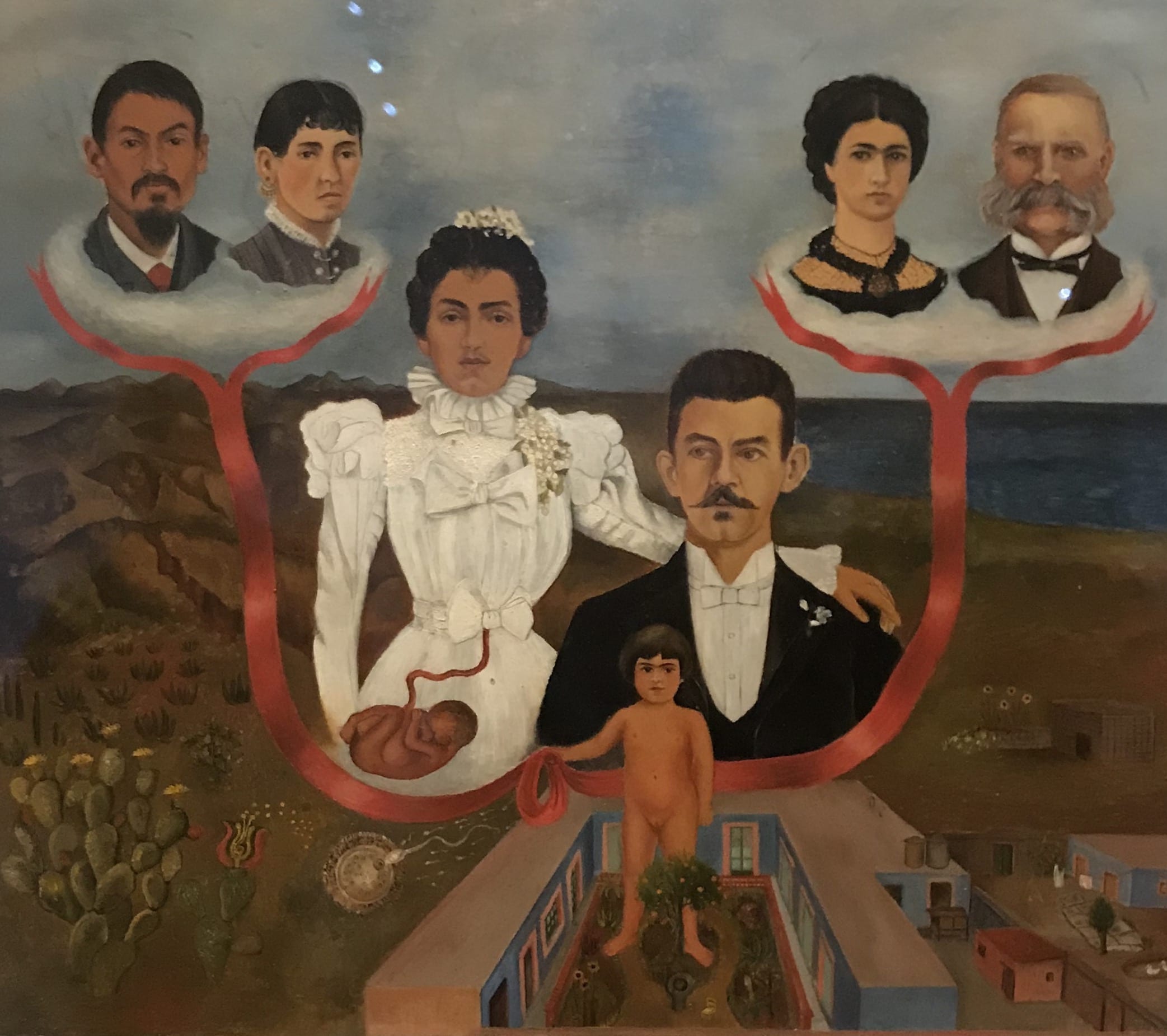In this piece by Charles White, I interpreted the pictorial space as fairly deep, although there isn’t really the presence of a deep background. Within the subject, White uses cross-hatching to build up the texture and a broad range of value to create a deep sense of pictorial space. The organic shape of the material the subject is wrapped in doesn’t allow for a linear perspective to be defined in terms of having no bold horizontal, vertical, or diagonal lines.
In another piece by Charles White, the use of lines assists in creating a deep pictorial space. The textured wooden planks in the drawing decrease in scale as the planks reach closer to the crouching man. The scale and diagonal lines create a one-point perspective with a vanishing point out of the frame, above the man’s head.
This piece by White is much more vivid than the previous two simply with the use of colour. Again, White uses the method of scale in order to create deep pictorial space as the hands of the subject appear much larger than the face. This depth of field is used alongside colour as the warm subject pops in the image.
In this piece by Gober, a line and value are used to emphasize pictorial depth. The horizontal line across the floor creates the environment inside the room along with the gradual adding of value closer to the window. Within the window frame, the perspective is created by seeing only the top inner portion of the window, creating the sense of looking up at the window. The cool blue also fades into the background, making the black and white interior the foreground.
Dufy creates a one-point perspective in this piece, as seen by the leading lines in the architecture of the street. The larger flags in the foreground in comparison to the smaller background flags also assist in creating pictorial depth. The saturation also becomes less vibrant as the eye travels down the street.
This piece by Rousseau is a bit confusing in terms of pictorial depth. The lack of texture on many surfaces makes the image appear flat, but certain pieces are more detailed, such as the lion’s fur. The content is deep as you can see the foliage recede into the forest as greenery is less clearly defined. The subjects (women, animals) are in the mid-ground and are more detailed than the foreground and background of nature.
Picasso’s piece is generally quite flat, being composed of mostly solid colours. The bold, black outlining of the subject/figure is very geometric rather than organic, creating a simple, graphic feel to the piece. The solid maroon background lacks variety in value or hue, therefore lacks depth. The skin tones vary in hue slightly, but all colours remain mostly analogous, lacking a broad range of value and therefore lacking pictorial depth.
This piece by Matisse is similar to the last in terms of using solid colours and outlining to create a flat environment and a lack of pictorial depth. Using only 4 colours in total, Matisse creates shapes with colour and black outlining, without shading, changing in scale, or linear perspectives. Overall, the piece has a very flat feel to it due to the lack of variation in value within each hue.
In this piece by Léger, the pictorial space differs within the image. The subjects, such as the women, tables, bowls, and even the cat are very deep and vary greatly in value as Léger creates heavy shadows within the form of the figures. The ground, however, is very two-dimensional and flat, created with solid hues and graphic shapes and patterns, not varying at all in terms of scale or value. This technique helps define the figure from the ground but creates a confusing sense of pictorial space.
The diagonal lines found in the architecture within this piece by Kahlo imply deep space with a one-point linear perspective. The horizon line also helps create a sense of depth and space. The warm hues of the figures, Kahlo’s family, stands out while the cool hues recede into the ground. The baby Kahlo pictured in the bottom of the painting also appears to stand behind a tree in a courtyard while the rest of the family floats atop the landscape, create a sense of order in the closeness of certain subjects.









